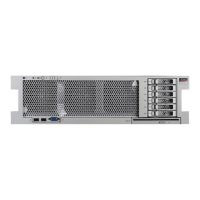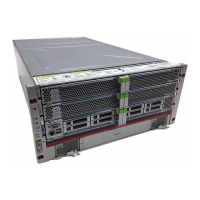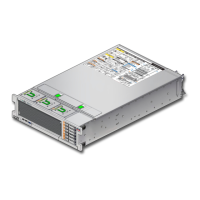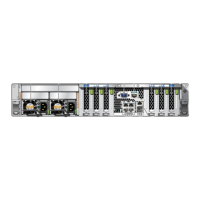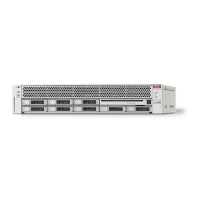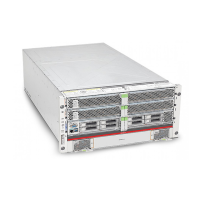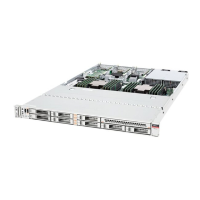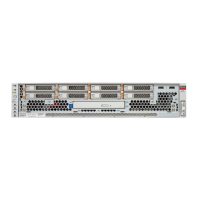Reactivate RAID Volumes
You can also use the devalias command to locate device paths specific to your server.
ok devalias
...
SAS0 /pci@301/pci@1/scsi@0
SAS1 /pci@303/pci@1/scsi@0
...
5.
Choose the RAID module on the motherboard.
ok select scsi
Instead of using the alias name scsi, you could type the full device path name (such as
/pci@400/pci@2/pci@0/pci@e/scsi@0).
6.
List all connected logical RAID volumes to determine which volumes are in an
inactive state.
ok show-volumes
For example, the following output shows an inactive volume:
ok show-volumes
Volume 0 Target 389 Type RAID1 (Mirroring)
WWID 03b2999bca4dc677
Optimal Enabled Inactive
2 Members 583983104 Blocks, 298 GB
.
Disk 1
Member 0 Optimal
Target a HGST H101860SFSUN600G A770 PhyNum 1
Disk 0
Member 1 Optimal
Target b HGST H101860SFSUN600G A770 PhyNum 2
7.
For each RAID volume listed as inactive, type the following command to activate
that volume.
ok inactive_volume activate-volume
where inactive_volume is the name of the RAID volume that you are activating. For example:
156 SPARC T7-2 Server Service Manual • July 2019

